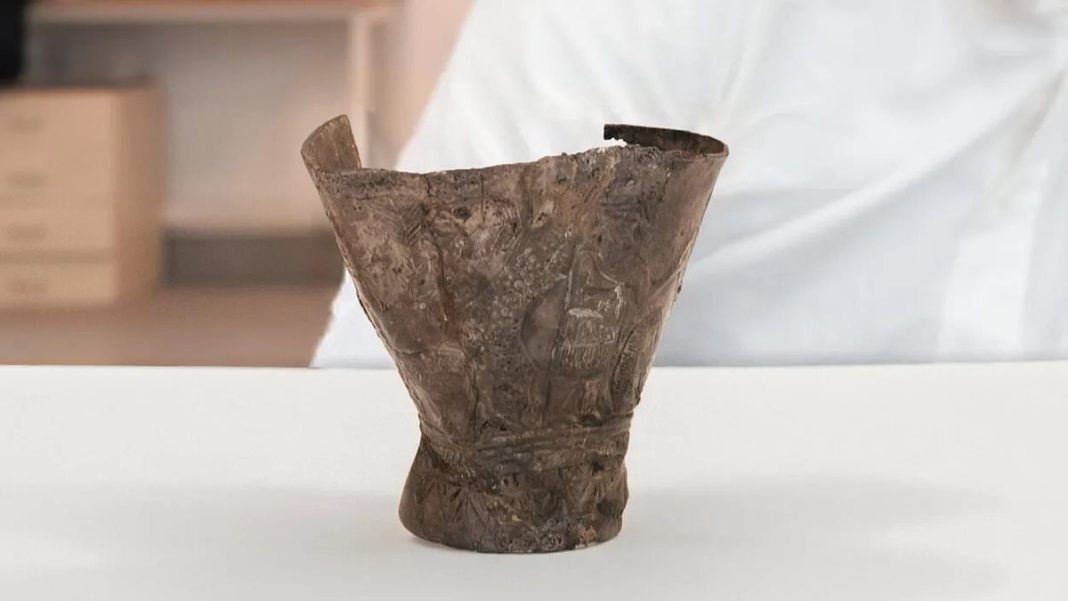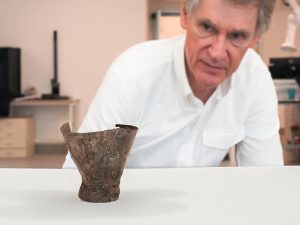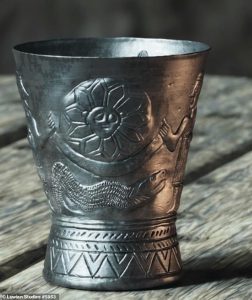Key Takeaways
- 4,300-year-old silver goblet shows earliest visual creation story
- Scenes depict cosmic chaos and order, matching Genesis themes
- Artifact dates to 2300 BC, predating biblical texts by centuries
Archaeologists have identified the earliest known visual depiction of God’s creation story on a 4,300-year-old silver goblet. The Ain Samiya goblet’s intricate imagery shows striking parallels to the biblical Book of Genesis, depicting the transition from cosmic chaos to ordered universe.
Ancient Artifact Reveals Creation Narrative
The three-inch tall silver cup, discovered in 1970 in the Judean Mountains, features detailed scenes of snakes, chimeras, gods, and celestial bodies. Recent analysis reveals the goblet illustrates the cosmos before and after formation, representing the same creation concepts found in Genesis.
Dr. Eberhard Zangger of the Luwian Studies Foundation explained: “The left side represents the chaotic state before creation, while the right shows the ordered universe after.” He noted this provides “an incredibly detailed picture of how people in 2300 BC imagined the cosmos before creation.”
Biblical Parallels
The visual narrative closely aligns with Genesis 1:1-4, which describes God separating light from darkness when creating heaven and earth. Researchers emphasize that while written creation references are ancient, finding such early visual depictions is extremely rare.
The goblet was found in a burial pit near the Palestinian village of Ain Samiya, where hundreds of ancient graves were uncovered. According to the study published in the Journal of the Ancient Near Eastern Society, the burial object aimed to “connect the soul of the deceased with the journey of the sun, ultimately to heaven.”
Iconography Analysis
The goblet features two vertical mythological scenes:
- Left scene: Shows chaos with a chimera (human torso, twin bull bodies) holding palm fronds, accompanied by an upright snake
- Right scene: Depicts ordered cosmos with two figures holding a crescent “boat of light” symbolizing sun and moon travel
Researchers interpret the crescent object as representing the celestial bodies traveling across the sky after order was established.
Historical Context and Timeline
Initially, scholars believed the imagery depicted the Babylonian Enuma Elish creation myth from the late 2nd millennium BC. However, Zangger’s team determined the goblet is much older, dating to approximately 2300 BC.
“The grave is from about 2200 BC, while the iconography resembles that of 2300 BC,” Zangger told The Times of Israel. “The time discrepancy between production and deposition is probably not more than 100 years.”
The study concludes the design mirrors Early Dynastic III culture (2900-2350 BC) from Mesopotamia, though the cup was likely produced in northern Syria before traveling to the southern Levant via caravan routes. Around 2200 BC, it was placed in its final resting tomb.






